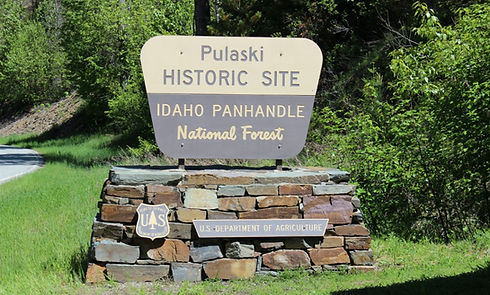Idaho Panhandle National Forest

Planting in this forest.
In 2024, the Idaho Panhandle National Forests intensified their commitment to ecological restoration through the Character Complex Post-Wildfire Reforestation project. This initiative focused on rehabilitating areas affected by the 2021 Character Complex Fire, which burned over 4,000 acres near Kellogg, Idaho. The project aimed to restore forest cover, stabilize soils, and enhance ecosystem resilience by planting 288,000 native tree seedlings, including species such as western white pine, western larch, and ponderosa pine.
Building upon previous restoration efforts, the 2023 Bottom Canyon Riparian Improvement project targeted the enhancement of riparian zones critical for water quality and wildlife habitat. By planting 3,052 native trees and shrubs along streambanks, the project sought to reduce erosion, improve aquatic habitats, and increase biodiversity within the forest's waterways.
In the same year, the North Zone Wildfire Recovery initiative addressed landscapes impacted by recent wildfires. Through the planting of 30,200 seedlings, the project aimed to accelerate forest regeneration, mitigate erosion, and restore habitats for species dependent on forested environments.
The 2022 Central Zone Wildfire Recovery Planting project continued these restoration efforts by introducing 25,700 native tree seedlings into fire-affected areas. This work was essential in promoting ecological recovery, enhancing forest diversity, and reducing the risk of future disturbances from wildfires, insects, and diseases.
These restoration activities are part of a broader strategy to address the impacts of past wildfires and prevent future catastrophic events. By reducing fuel loads and restoring natural fire regimes, the forest aims to create a more resilient ecosystem capable of withstanding environmental stressors. Additionally, these efforts contribute to the preservation of critical watersheds and the protection of nearby communities from wildfire threats. Since 2020, more than 1.3 million trees have been planted as part of these reforestation efforts.




Location
Idaho, USA
Project Type
Reforestation
Environmental Benefits
Wildfire Recovery
Soil Erosion Prevention
Habitat Restoration
Biodiversity Enhancement
Increased Carbon Sequestration
About this forest
The Idaho Panhandle National Forests span over 2.5 million acres across northern Idaho, encompassing diverse landscapes of dense coniferous forests, alpine lakes, and rugged mountain peaks. Known for its rich biodiversity, the forest supports wildlife such as moose, grizzly bears, and eagles. It offers abundant recreational opportunities, including hiking, fishing, and camping, amidst stunning natural beauty and serene wilderness.




